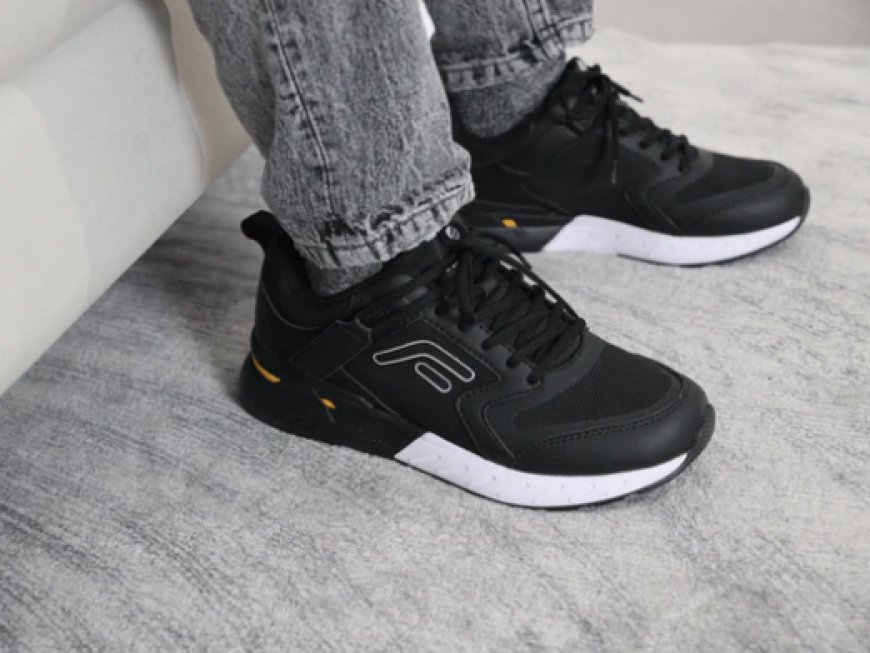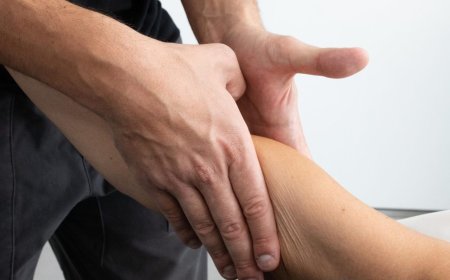The Best Men’s Diabetic Walking Shoes: Comfort, Support, and Protection in Every Step

For millions of men living with diabetes, foot care is more than a matter of comfort it's a critical part of overall health. Diabetes can lead to serious foot complications, including neuropathy, poor circulation, and an increased risk of infections or ulcers. Thats why choosing the mens diabetic walking shoes isnt just about style its about safety, support, and prevention.
In this guide, well walk you through what makes diabetic walking shoes different, what features to look for, and recommend top options that combine comfort with protective design.
Why Diabetic Men Need Specialized Walking Shoes
Men with diabetes often suffer from:
-
Nerve damage (neuropathy) that causes numbness or tingling.
-
Reduced blood flow that slows down healing.
-
High risk of pressure sores, ulcers, and infections.
The right footwear minimizes these risks by offering:
-
Extra room to prevent rubbing and blisters.
-
Cushioning and support to absorb shock.
-
Seamless interiors that reduce irritation.
-
Slip-resistant soles to prevent falls.
Without proper shoes, even a small blister can develop into a serious problem. Thats why diabetic shoes are an essential preventive tool.
Key Features to Look For in Diabetic Walking Shoes
When choosing diabetic shoes, prioritize the following features:
1. Wide Toe Box
Feet may swell throughout the day. A spacious toe box gives your toes room to move freely without friction, reducing the risk of corns and pressure points.
2. Seamless, Breathable Interior
Look for shoes with soft lining and no internal stitching that could rub or irritate sensitive skin. Moisture-wicking materials also help prevent fungal infections.
3. Adjustability
Velcro straps, elastic laces, or stretch uppers help accommodate foot swelling and make the shoe easier to put on and take off.
4. Padded Insoles and Arch Support
Supportive insoles (especially removable ones) help reduce pressure on the heel and forefoot. U-shaped heel cups and anatomical arch support stabilize the foot.
5. Shock Absorption
Thick midsoles made from EVA or other cushioning materials protect joints and prevent jarring impacts.
6. Non-Slip Outsole
Grip and traction are critical for safety. Look for rubber outsoles with tread patterns designed to reduce slips and falls.
Recommended: Top Diabetic Walking Shoes for Men
Here are some excellent options that combine all the right features with real-world comfort:
1. FitVille Men's EasyTop StrapEase Diabetic Shoes V4
-
Width options up to 6E
-
Dual adjustable Velcro straps for swollen feet and high insteps
-
U-shaped heel cup for heel pain relief
-
Cushioned collar and friction-free lining
-
Slip-resistant solid rubber outsole
-
Approx. weight: 304.5g (US size 8.5)
Why we like it: Ideal for men with wider feet, bunions, or neuropathy. Super easy to get on and off and built for long wear without irritation.
2. Orthofeet Edgewater Stretchable Walking Shoes
-
Designed specifically for diabetes and neuropathy
-
Orthotic insoles with anatomical arch support
-
Stretchable upper for extra comfort
-
Lightweight and cushioned
Why we like it: These are Medicare-approved and offer therapeutic support for multiple foot conditions including arthritis and plantar fasciitis.
3. Dr. Comfort Douglas Mens Casual Diabetic Shoe
-
Leather and Lycra upper for flexibility
-
Removable insoles for orthotics
-
Seam-free padded lining
-
Hook-and-loop strap for adjustability
Why we like it: Stylish enough for everyday wear, with a comfort system built to prevent diabetic complications.
Tips for Wearing Diabetic Walking Shoes
-
Break them in gradually to ensure comfort and fit.
-
Inspect your feet daily for any signs of redness, blisters, or sores.
-
Replace shoes regularly if they become worn or lose cushioning.
-
Pair with diabetic-friendly socks that are seamless and moisture-wicking.
When to Talk to a Doctor or Podiatrist
If you're unsure about the right footwear or have ongoing foot pain, dont guess. A podiatrist can assess your gait and recommend shoes or custom orthotics tailored to your condition.
Many diabetic shoes are covered by Medicare if prescribed by a physician. Ask about qualifying for therapeutic shoes and inserts through your health plan.
Final Thoughts
Diabetic walking shoes arent just about comfort theyre a crucial defense against foot injuries and long-term complications. The best shoes for men with diabetes combine protection, breathability, cushioning, and a proper fit to keep you moving safely.
Whether youre going for a daily walk, running errands, or spending hours on your feet, the right diabetic shoes will help you walk with confidence and peace of mind.


































